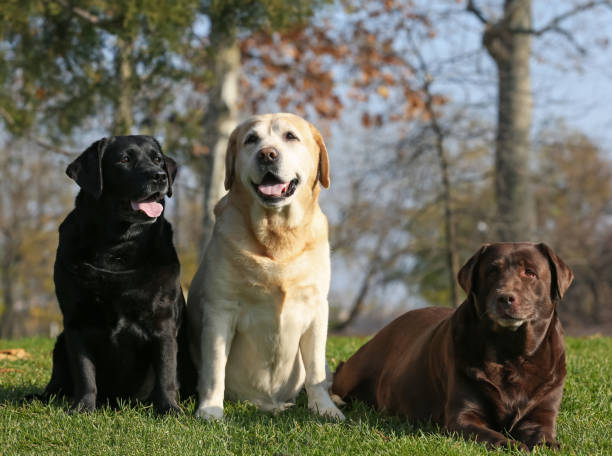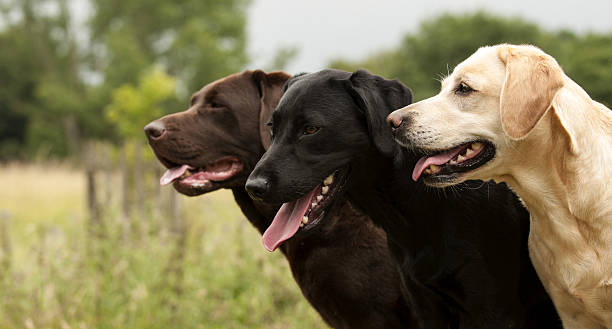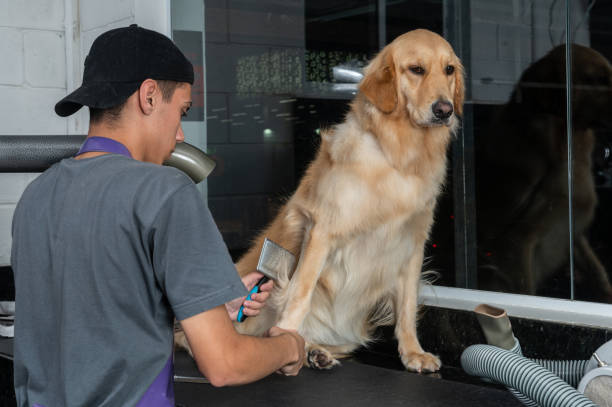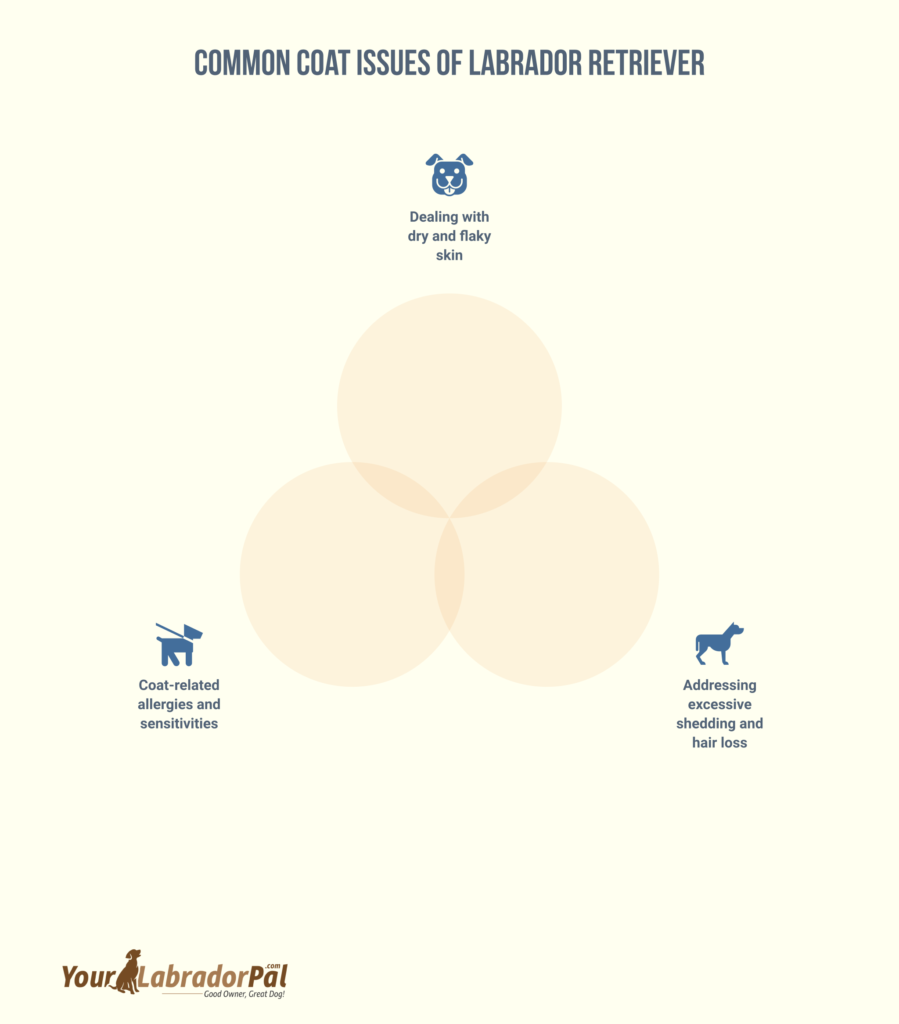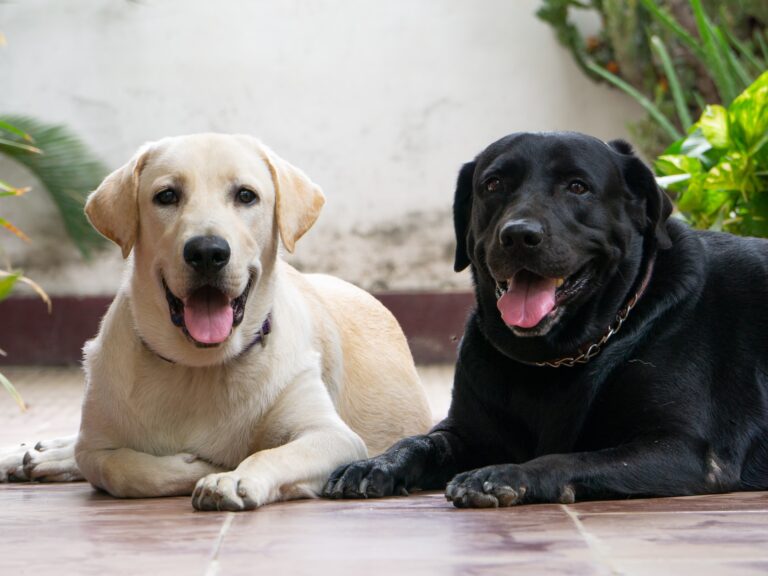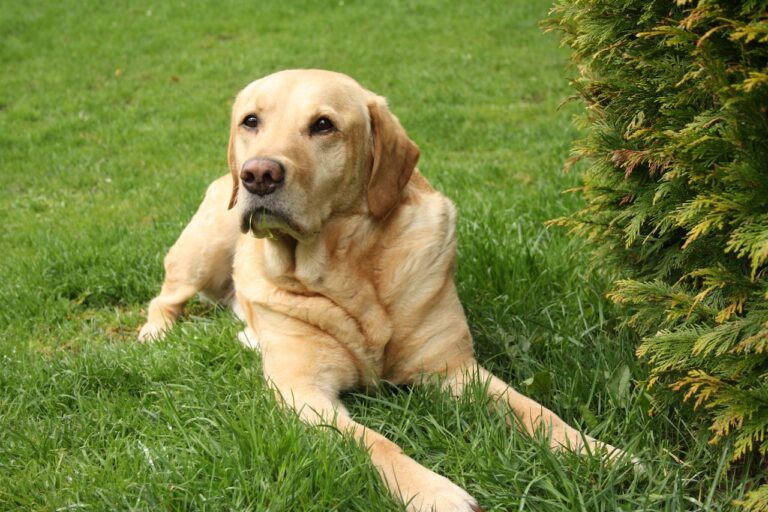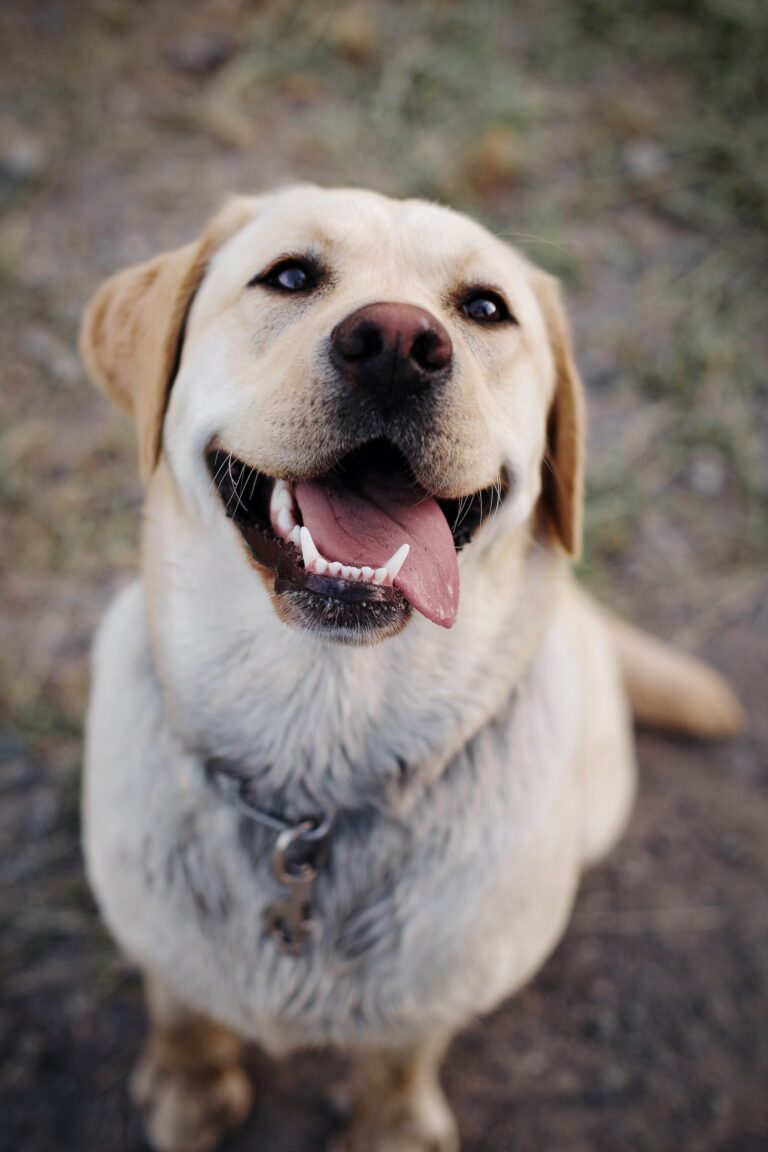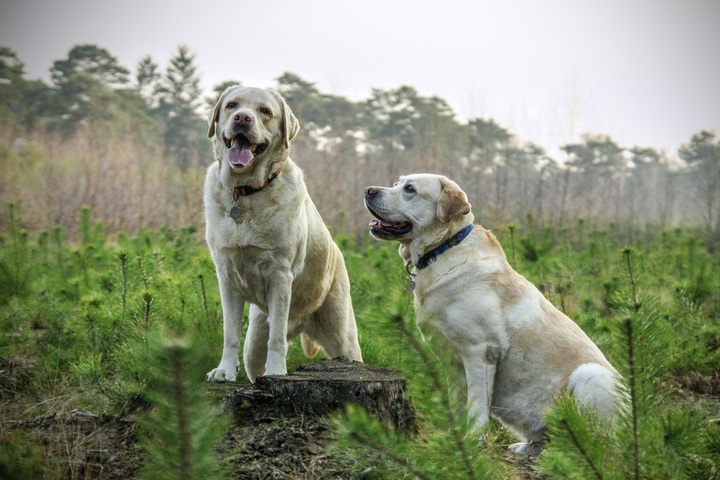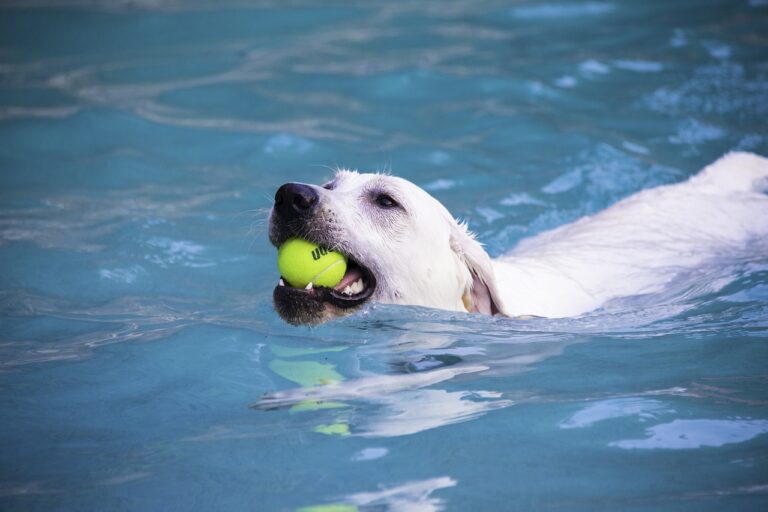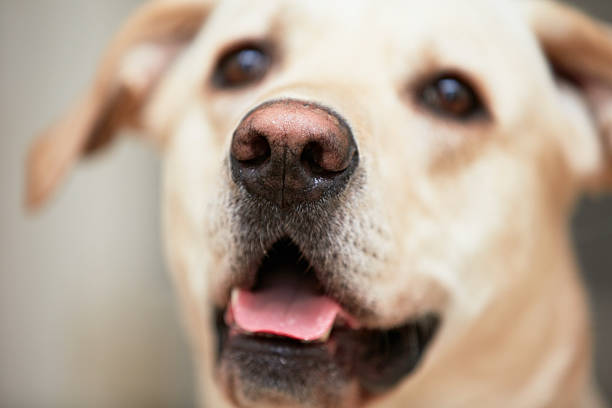Labrador Retriever Coat: Check the Various Lustrous Colors
Have you ever pondered the remarkable coat of the Labrador Retriever? This classic breed’s luxurious and adaptable fur has won people’s hearts worldwide, but that’s not all there is to it. Here, we’ll take you on a tour of the fantastic world of Labrador Retriever coat. Reasons why they have grown so popular will be discussed, including the breed’s endearing characteristics and the valuable qualities of their plush fur.
In this article, we’ll examine the several varieties of coats available and help you determine which one best suits your needs. And because I’m a Labrador expert, I’ll give you my best advice to help you confidently choose. Whether you’re a lifelong Labrador fan or just curious about the breed, you’ll find all the information you need about the Labrador Retriever’s magnificent coat right here. Learn the secrets of this breed’s allure and discover what it’s like to have a natural dog as a friend.
Types of Labrador Retriever Coat
The Labrador Retriever coat is a defining feature of this beloved breed. Its short and dense texture provides them with excellent protection against various weather conditions. Labrador Retrievers come in three primary coat colors: black, chocolate, and yellow, each adding to their unique charm. The coat’s water-resistant qualities stem from their origins as water dogs, assisting in retrieving the game for hunters.
Besides their practical attributes, these coats boast a lustrous sheen that enhances the breed’s overall appeal. Regular grooming is essential to maintain their coat’s health and cleanliness. Labrador Retrievers’ coats contribute to their physical resilience and add to their friendly and lovable nature, making them one of the most popular family pets and companions worldwide.
🐕Two Primary Coat Types
The two primary coat types of Labrador Retrievers are the double and single coats. The double coat consists of a soft, insulating undercoat beneath a coarser outer layer, protecting it from various climates. On the other hand, the single coat lacks the dense undercoat and is typically shorter and easier to maintain.
🐾Short
The two main coat kinds of Labrador Retrievers are the single coat, which is shorter and simpler to keep but lacks the dense undercoat, and the double coat, which has a soft, insulating undercoat and a rougher outer layer, protecting from various conditions.
🐾Dense
Both the double coat, which is dense and has a soft, insulating undercoat beneath a coarser outer layer, offering excellent protection from diverse temperatures, and the single coat, which is shorter and simpler to maintain but lacks the dense undercoat, are available in Labrador Retrievers.
🐕Comparison between the American and English Labrador Retriever Coat Variations
The American and English Labrador Retrievers exhibit subtle differences in their coat variations. The American Labrador typically features a thinner coat with a sleeker appearance, making it more suitable for warmer climates. They often have a more refined build and a narrower head.
On the other hand, the English Labrador boasts a thicker, denser coat, making it well-adapted to colder temperatures. Their stockier build and broader head contribute to a more robust and blocky appearance.
Despite these variations, both coat types share the Labrador’s signature short and water-resistant coat, allowing them to excel in water activities. Both varieties require regular grooming to keep their coats healthy and clean.
It is essential to note that these differences are more related to breed standards and the preferences of breeders in different regions, rather than distinct separate breeds. Both American and English Labradors share the same friendly, affectionate, and intelligent nature that makes them beloved family pets worldwide.
🐕Understanding the Water-Resistant Double Coat
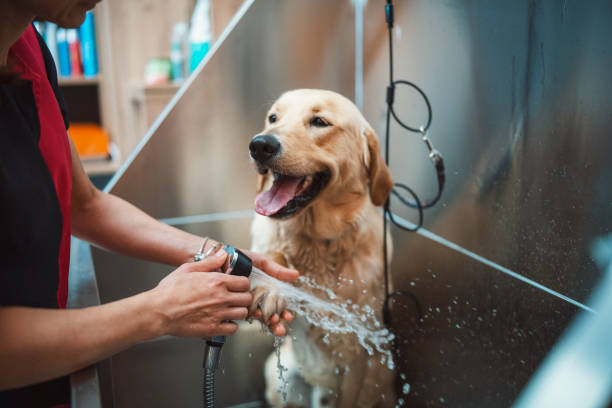
The outer layer’s coarseness provides a barrier against water, preventing it from soaking into their skin and allowing them to stay dry even after swimming. This unique feature was essential for their original purpose as retrieving dogs for fishermen and hunters.
The water-resistant double coat also helps protect Labrador Retrievers from the elements and provides them with excellent insulation, making them well-suited for various climates. Regular brushing is necessary to maintain the coat’s health and minimize shedding.
This exceptional coat trait, combined with their strong swimming abilities and love for water, makes Labrador Retrievers outstanding companions for outdoor activities, making them cherished by families and sports enthusiasts alike.
Labrador Retriever Coat Colors
We’ll look at the history of each colour in the breed, from the common black, yellow, and chocolate to the rare and unusual varieties.
🐕Recognized Coat Colors by Breed Standards
According to breed standards, the Labrador Retriever’s acceptable coat colors are black, chocolate, and yellow. These three major hues, which represent the most prevalent and typical coat variations among Labrador Retrievers, are universally approved and regarded as breed standards.
🐾Black
The black coat color is one of the three recognized colors for Labrador Retrievers. It is a classic and popular choice, giving Labradors a sleek and elegant appearance. Black Labradors are known for their friendly and affectionate nature, making them beloved family pets and reliable working dogs in various fields. Check how much a black Labrador retriever cost if you want to bring them home.
🐾Chocolate
The chocolate coat color is another recognized color for Labrador Retrievers. This rich and deep brown hue is a striking and attractive variation. Chocolate Labradors share the same friendly and loyal temperament as other colors, and their unique coat shade adds to their charm, making them sought-after companions and working partners.
🐾Yellow
The yellow coat color is the third recognized color for Labrador Retrievers. From pale cream to fox red, yellow Labradors are warm and sunny. Their friendly and gentle nature and diverse coat shades make them delightful family pets and beloved therapy and assistance dogs.
🐕Dilute Coat Colors and their Variations
Dilute coat colors in Labrador Retrievers are less common variations from specific genetic factors. These colors are variations of the primary recognized colors, including silver, charcoal, and champagne. Silver Labradors have a light grayish hue, while charcoal Labradors exhibit a darker, almost black appearance with silver-gray hairs interspersed. Champagne Labradors feature a pale golden color with a hint of cream.
Dilute coat colors have been a subject of debate in some breed standards, and their recognition may vary among kennel clubs. It’s important to note that these variations don’t impact the Labrador’s temperament or health, but they may not be eligible for certain dog shows or competitions.
Despite their less common status, Labradors with dilute coat colors can still make wonderful and affectionate pets, providing all the cherished qualities Labrador Retrievers are known for. Responsible breeding practices should be followed to maintain the breed’s overall health and well-being.
🐕Rare Coat Colors
Rare coat colors in Labrador Retrievers are variations that deviate from the standard black, chocolate, and yellow. Some of these rare colors include silver, charcoal, champagne, and fox red. These colors may result from specific genetic combinations, but their recognition may vary among kennel clubs and breed standards.
Silver Labradors have a grayish hue, while charcoal Labradors display a dark, almost black appearance with silver-gray hairs. Champagne Labradors showcase a pale golden color with a touch of cream. Fox red Labradors exhibit a deep red shade, resembling the color of a fox.
While these rare coat colors can be strikingly beautiful, responsible breeding practices are crucial to ensure the health and well-being of the breed. Ethical breeders prioritize the overall health, temperament, and conformation of the Labrador Retrievers rather than focusing solely on coat color. Whether rare or standard, Labrador Retrievers with any coat color make excellent companions due to their friendly, loving, and loyal nature.
Shedding and Grooming
Labrador Retrievers are known to be moderate to heavy shedders, particularly during seasonal changes when they may shed more profusely. Shedding is a natural process for dogs to get rid of old or damaged hair, and it helps in maintaining their coat health. While shedding cannot be completely eliminated, regular grooming can significantly reduce the amount of loose hair around the house.
Grooming plays a crucial role in keeping a Labrador Retriever coat healthy and clean. The double coat requires regular brushing to remove loose fur, dirt, and debris, preventing tangles and mats from forming. This also helps distribute natural oils, which contribute to a shiny and healthy coat.
During shedding seasons, daily brushing is recommended to manage the increased hair loss. Outside of peak shedding times, a Labrador may need brushing around two to three times a week. However, individual shedding patterns can vary, and some Labradors may shed more or less depending on genetics, climate, and overall health.
Regular grooming also provides an opportunity to inspect their ears, eyes, teeth, and nails, ensuring overall health and catching any potential issues early. Bathing should be done as needed, typically every two to three months or when the dog gets particularly dirty. Frequent bathing can strip their coat of essential oils, leading to dry skin and irritation. It is crucial to use a dog-specific shampoo that won’t harm their skin or coat.
Regular grooming is crucial for Labrador Retrievers to maintain oral health and prevent issues. Proper dental care and nail trimming are essential, with professional help available. Regular brushing, bathing, and grooming practices contribute to a healthy, shiny coat and a comfortable companion.
Common Labrador Retriever Coat Issues and Solutions
We’ll talk about common Labrador Retriever coat problems, such as shedding, mats, and skin irritations. In order to make sure your pets have a happy and healthy life, we will provide you with the tools and knowledge you need to effectively deal with these issues.
🐕Dealing with Dry and Flaky Skin
If your Labrador Retriever is experiencing dry and flaky skin, several steps can help alleviate the issue. First, ensure they have a balanced diet with appropriate nutrients for healthy skin and coat. Regular grooming is vital to remove dead skin cells and distribute natural oils.
Use a moisturizing dog shampoo and avoid over-bathing, as excessive bathing can dry out their skin. A humidifier in the house can add moisture to the air, benefiting both you and your dog’s skin. If the condition persists or worsens, consult a veterinarian to rule out any underlying health issues and receive appropriate treatment or dietary recommendations.
🐕Addressing Excessive Shedding and Hair Loss
Excessive shedding and hair loss in Labrador Retrievers can be attributed to various factors, including seasonal changes, stress, allergies, or underlying health conditions. To address this issue, start by ensuring a balanced diet rich in essential nutrients. Regular grooming, including daily brushing during shedding seasons, helps manage loose hair.
Consult your veterinarian to rule out any health concerns, allergies, or skin conditions that might be contributing to the problem. If necessary, they can recommend supplements to promote healthy skin and coat. Avoid excessive bathing and use a dog-specific shampoo to maintain the natural oils on their skin.
Keep your Labrador’s environment clean and free from potential allergens. With proper care and attention, you can reduce excessive shedding and hair loss, ensuring your Labrador remains healthy and comfortable.
🐕Coat-Related Allergies and Sensitivities
Labrador Retrievers, like other breeds, can develop coat-related allergies and sensitivities. Allergies may be triggered by specific proteins found in the dog’s dander, saliva, or urine. These allergens can cause skin irritation, itching, redness, and even respiratory issues in some individuals.
Regular grooming can help reduce allergens by removing loose hair and dander from the coat. Bathing with hypoallergenic shampoos may also be beneficial, as it can reduce the number of allergens present on the dog’s skin and fur. If you suspect your Labrador has coat-related allergies or sensitivities, it’s essential to consult a veterinarian. They can conduct tests to identify the specific allergen and recommend appropriate management strategies.
In some cases, dietary changes or allergy medications may be prescribed to alleviate symptoms. Additionally, keeping your home clean and free from allergens, such as vacuuming regularly and washing their bedding frequently, can also help create a more comfortable environment for both your Labrador and family members with allergies.
Frequently Asked Questions
Q: What does a Labrador’s coat look like?
A: The double coat of a labrador is made up of two layers of fur. The top layer, often known as the Guard Coat or Top Coat, is a little bit rougher and more “wiry”. The Undercoat, a softer and lighter covering, is located beneath.
Q: Are Labrador Retrievers double-coated?
A: The Labrador has two layers of hair or fur, just like many other dog breeds with double coats. The top layer, also referred to as the top coat, is more wiry, rough, or abrasive to the touch. A layer of fine hairs that are extremely near to the skin lies beneath this second, softer undercoat.
Q: How can I maintain my Lab’s glossy coat?
A: For the healthy growth of new hair and to eliminate dead hair and skin cells, your Labrador Retriever needs to be brushed at least once each week. Shining up your Lab’s coat with a bristle brush can be very effective.
Q: What makes a Lab coat unique?
A: Uses for Laboratory Coat. Lab coats, when worn appropriately, protect flesh and clothing from accidental touch and tiny droplets. (As long as they aren’t worn outside of the lab) Stop the spread of contamination outside the lab.
Q: Should I brush my Lab every day?
A: The more your lab is brushed, the less shedding there will be in your home. You can brush your lab once a week if his coat isn’t shedding much right now, but you should brush him daily if it is. How frequently you should bathe your Labrador Retriever depends on how you live.
Final Thoughts
The lustrous coats of Labrador Retrievers are not only visually appealing but also serve crucial functional purposes. Their water-resistant double coats with a soft undercoat and coarser outer layer enable them to excel as water dogs, making them exceptional swimmers and retrievers. The three primary recognized colors – black, chocolate, and yellow – along with rare dilute variations, offer a diverse and beautiful range of coat shades.
Proper grooming and care play a vital role in maintaining the health and appearance of their coats. Regular brushing, appropriate bathing, and ensuring a balanced diet contribute to the overall well-being of Labrador Retrievers. Beyond their physical attributes, it is the Labrador Retriever’s gentle and loving nature that truly makes them stand out as cherished companions and loyal family members. The combination of their delightful personalities and magnificent coats makes Labrador Retrievers a beloved breed, bringing joy and happiness to countless households worldwide.

